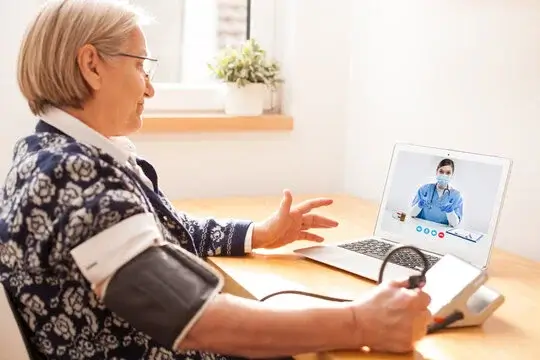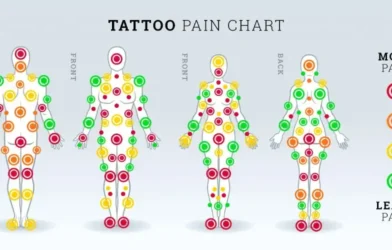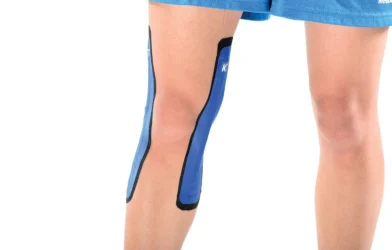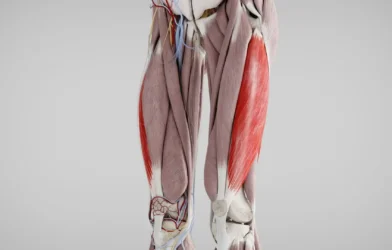Healthcare in 2025 looks very different from the way it did just a decade ago. Long waiting rooms, rushed check-ups, and fragmented care are slowly being replaced with a connected, continuous approach. At the center of this transformation is remote patient monitoring, a system that allows patients to share health data directly with their providers without leaving home.
Whether it’s a person with high blood pressure, a senior tracking heart rhythms, or a young adult managing anxiety, this model makes healthcare more accessible and proactive.
At Health Nation Care, our goal is to highlight solutions that improve both medical outcomes and daily life. Remote monitoring is one of the strongest examples, blending technology, patient engagement, and preventive care in a way that supports individuals, families, and providers alike.
What is Remote Patient Monitoring?
Remote Patient Monitoring (often called RPM) uses connected devices, apps, and digital tools to collect patient data outside of traditional clinical settings. A smart blood pressure cuff, continuous glucose monitor, or even a smartwatch can transmit data to physicians in real time. Instead of depending on office visits spaced months apart, doctors can see daily changes and respond much faster.
This model is part of the broader shift toward telehealth and digital health tools. What sets RPM apart is its focus on ongoing care rather than one-time appointments. It creates a bridge between at-home living and professional oversight, giving patients the reassurance that their health is being tracked continuously.
Why Remote Patient Monitoring Matters in 2025
The demand for accessible healthcare is rising as chronic conditions become more common and populations continue to age. RPM meets this demand by making care smarter, faster, and more efficient. It supports patients living in rural regions, reduces unnecessary emergency room visits, and helps manage long-term conditions such as diabetes, heart failure, and chronic pain.
For providers, RPM strengthens decision-making by giving them continuous access to accurate data. For patients, it removes the burden of travel and makes them an active partner in their own care journey. In 2025, this shift is not a luxury it’s a necessity.
Top 7 Benefits of Remote Patient Monitoring in 2025
1. Better Chronic Disease Management
Chronic illnesses such as hypertension, diabetes, and heart disease require close supervision. Waiting three months for a follow-up can delay important treatment changes. With remote monitoring, blood sugar trends or blood pressure spikes can be seen immediately. Physicians can then adjust medication, recommend lifestyle changes, or schedule a virtual visit before complications occur.
This proactive approach prevents crises, reduces hospital readmissions, and helps patients feel more confident managing their health daily. For those living with lifelong conditions, RPM acts like a constant safety net.
2. Stronger Mental Health Support
Mental health is now recognized as a critical part of overall well-being. Remote monitoring tools extend beyond physical health to track mood, stress, and sleep patterns. Patients struggling with anxiety or depression can log daily check-ins through mobile apps. Providers can use this data to identify early warning signs, adjust treatment, or recommend therapy sessions before conditions worsen.
Pain management also plays a role here. People experiencing chronic pain often struggle with related emotional stress. Logging pain levels daily allows providers to see how discomfort affects sleep, mood, and daily functioning. By addressing both physical and mental health in real time, RPM brings a more complete picture of patient care.
3. Lower Healthcare Costs
One of the most immediate advantages of RPM is cost reduction. Hospital stays, emergency visits, and unnecessary appointments are some of the biggest expenses in healthcare. Remote monitoring cuts these costs by catching problems early. Patients save money on transportation and avoid repeated visits for routine checks.
Insurance providers are also beginning to recognize these savings. In many regions, reimbursement models now include remote monitoring services, making them accessible to more patients. By 2025, this cost-efficient model is becoming standard practice.
4. Improved Access to Care in Rural Areas
Geography has long been a barrier to healthcare. Patients in rural towns often travel hours to reach the nearest hospital or clinic. With RPM, care comes directly into the home. Wearables, connected devices, and secure apps transmit information to providers no matter where the patient lives.
This is especially meaningful for older adults and individuals with mobility challenges. Instead of navigating long travel times, they can receive care without leaving their living room. Remote patient monitoring is bridging the gap for communities that were once underserved.
5. Enhanced Patient Engagement
A major challenge in healthcare has always been keeping patients motivated to follow their treatment plans. RPM changes this by giving individuals access to their own health data in real time. Instead of waiting for lab results, they can see how daily choices like diet, exercise, or medication affect their numbers.
Engagement increases when patients feel ownership over their care. Dashboards, reminders, and simple progress charts encourage healthier decisions and keep patients connected to their providers. This engagement directly improves outcomes, making RPM not just a tool, but a partnership.
6. Faster Response in Emergencies
Emergencies often occur without warning, but remote monitoring systems are designed to catch red flags quickly. A sudden drop in oxygen levels, irregular heart rhythm, or dangerously high blood pressure can trigger alerts to medical teams instantly.
Instead of waiting until symptoms become unbearable, help can be dispatched sooner. This rapid response saves lives, prevents long-term complications, and reduces the emotional stress patients and families face in crisis moments.
7. Support for Preventive Care
Healthcare is shifting from reaction to prevention, and RPM is at the center of that movement. By continuously monitoring patients, providers can identify early signs of trouble before they become serious conditions. Rising blood pressure, changes in sleep quality, or irregular heart rates can be addressed early with lifestyle changes or medications.
For patients, this means fewer hospital visits and a longer, healthier life. For providers, it means more effective use of resources. Preventive care is no longer a once-a-year conversation, it’s part of everyday life through remote monitoring.
Remote Patient Monitoring and Pain Management
Chronic pain is one of the most difficult conditions to manage. Patients often experience fluctuating symptoms that are hard to capture during brief office visits. Remote monitoring tools give pain doctors insight into these daily changes.
By logging pain intensity, sleep quality, and mobility levels, providers can adjust treatments such as physical therapy, injections, or medications more accurately. This improves quality of life and reduces the need for repeated clinic visits. For patients managing arthritis, back pain, or post-surgical recovery, RPM offers ongoing support and reassurance.
Remote Monitoring for Mental Health Patients
Mental health treatment works best when support is consistent. With remote monitoring:
- Patients can log daily mood levels.
- Sleep and activity patterns reveal stress or depressive episodes.
- Heart rate variability indicates rising anxiety.
This data creates a more complete picture of mental health than traditional office visits alone. Providers can check in more often, suggest coping strategies, and intervene before a patient reaches a crisis point. For those balancing therapy, medication, and lifestyle changes, remote monitoring offers a sense of connection and safety.
The Role of AI and Wearables in RPM
Artificial Intelligence (AI) and wearable devices are powering the next phase of remote care. AI algorithms can analyze thousands of data points in real time, identifying patterns that humans might miss. For example, subtle changes in heart rate or oxygen levels can predict potential complications days before symptoms appear.
Wearables like smartwatches, fitness trackers, and connected medical devices provide constant feedback. These tools are now smaller, more accurate, and easier for patients to use daily. The combination of AI and wearables is making RPM smarter, faster, and more reliable in 2025.
Challenges and the Future Outlook
Like any new technology, RPM comes with challenges. Data security and patient privacy remain top concerns, as sensitive information is transmitted electronically. Integration with existing healthcare systems is another hurdle, since hospitals and clinics use different platforms.
However, the outlook is optimistic. The expansion of 5G networks is enabling faster, more reliable data transfer. Insurance models are catching up, offering reimbursement for RPM services. As digital literacy improves, more patients are adopting these tools with confidence.
By 2030, remote monitoring is expected to be a standard part of most treatment plans, supporting both preventive and specialized care.
Final Thoughts
Healthcare is no longer limited to the walls of a clinic. Remote Patient Monitoring is reshaping the way patients connect with providers, making care continuous, proactive, and more human. From managing chronic diseases and mental health to improving pain care and preventive strategies, RPM is proving to be one of the most important healthcare trends of 2025.
At Health Nation Care, we believe that empowering patients with data, technology, and consistent support leads to healthier lives. Remote monitoring is not just the future it is the present, and its benefits are transforming healthcare for millions worldwide.











Comments are closed